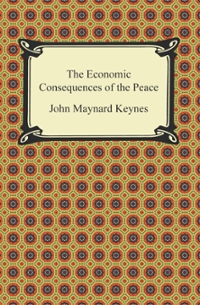Question
1. Suppose all firms in a monopolistically competitive industry were merged into one large firm. Would that new firm produce as many different brands? Would
1. Suppose all firms in a monopolistically competitive industry were merged into one large firm. Would that new firm produce as many different brands? Would it produce only a single brand? Explain.
2. Consider two firms facing the demand curve P = 50 5Q, where Q = Q1 + Q2. The firms' cost functions are C1(Q1) = 20 + 10 Q1 and C2(Q2) = 10 + 12 Q2.
a. Suppose both firms have entered the industry. What is the joint profit-maximizing level of output? How much will each firm produce? How would your answer change if the firms have not yet entered the industry?
b. What is each firm's equilibrium output and profit if they behave non cooperatively? Use the Cournot model. Draw the firms' reaction curves and show the equilibrium.
c. How much should Firm 1 be willing to pay to purchase Firm 2 if collusion is illegal but a takeover is not?
3. A monopolist can produce at a constant average (and marginal) cost of AC = MC = $5. It faces a market demand curve given by Q = 53 P.
a. Calculate the profit-maximizing price and quantity for this monopolist. Also calculate its profits.
b. Suppose a second firm enters the market. Let Q1 be the output of the first firm and Q2 be the output of the second. Market demand is now given by Q1 + Q2 = 53 - P. Assuming that this second firm has the same costs as the first, write the profits of each firm as functions
of Q1 and Q2.
c. Suppose (as in the Cournot model) that each firm chooses its profit-maximizing level of output on the assumption that its competitor's output is fixed. Find each firm's "reaction curve" (i.e., the rule that gives its desired output in terms of its competitor's output).
d. Calculate the Cournot equilibrium (i.e., the values of Q1 and Q2 for which each firm is doing as well as it can given its competitor's output). What are the resulting market price and profits of each firm?
e. Suppose there are N firms in the industry, all with the same constant marginal cost, MC = $5. Find the Cournot equilibrium. How much will each firm produce, what will be the market price, and how much profit will each firm earn? Also, show that as N becomes large, the market price approaches the price that would prevail under perfect competition.
4. This exercise is a continuation of Exercise 3. We return to two firms with the same constant average and marginal cost, AC = MC = 5, facing the market demand curve Q1 + Q2 = 53 P. Now we will use the Stackelberg model to analyze what will happen if one of the firms makes its output decision before the other.
a. Suppose Firm 1 is the Stackelberg leader (i.e., makes its output decisions before Firm 2). Find the reaction curves that tell each firm how much to produce
in terms of the output of its competitor.
b. How much will each firm produce, and what will its profit be?
5. Two firms compete in selling identical widgets. They choose their output levels Q1 and Q2 simultaneously and face the demand curve
P = 30 - Q
where Q = Q1 + Q2. Until recently, both firms had zero marginal costs. Recent environmental regulations have increased Firm 2's marginal cost to $15. Firm 1's marginal cost remains constant at zero. True or false: As a result, the market price will rise to the monopoly level.
Step by Step Solution
There are 3 Steps involved in it
Step: 1

Get Instant Access to Expert-Tailored Solutions
See step-by-step solutions with expert insights and AI powered tools for academic success
Step: 2

Step: 3

Ace Your Homework with AI
Get the answers you need in no time with our AI-driven, step-by-step assistance
Get Started


